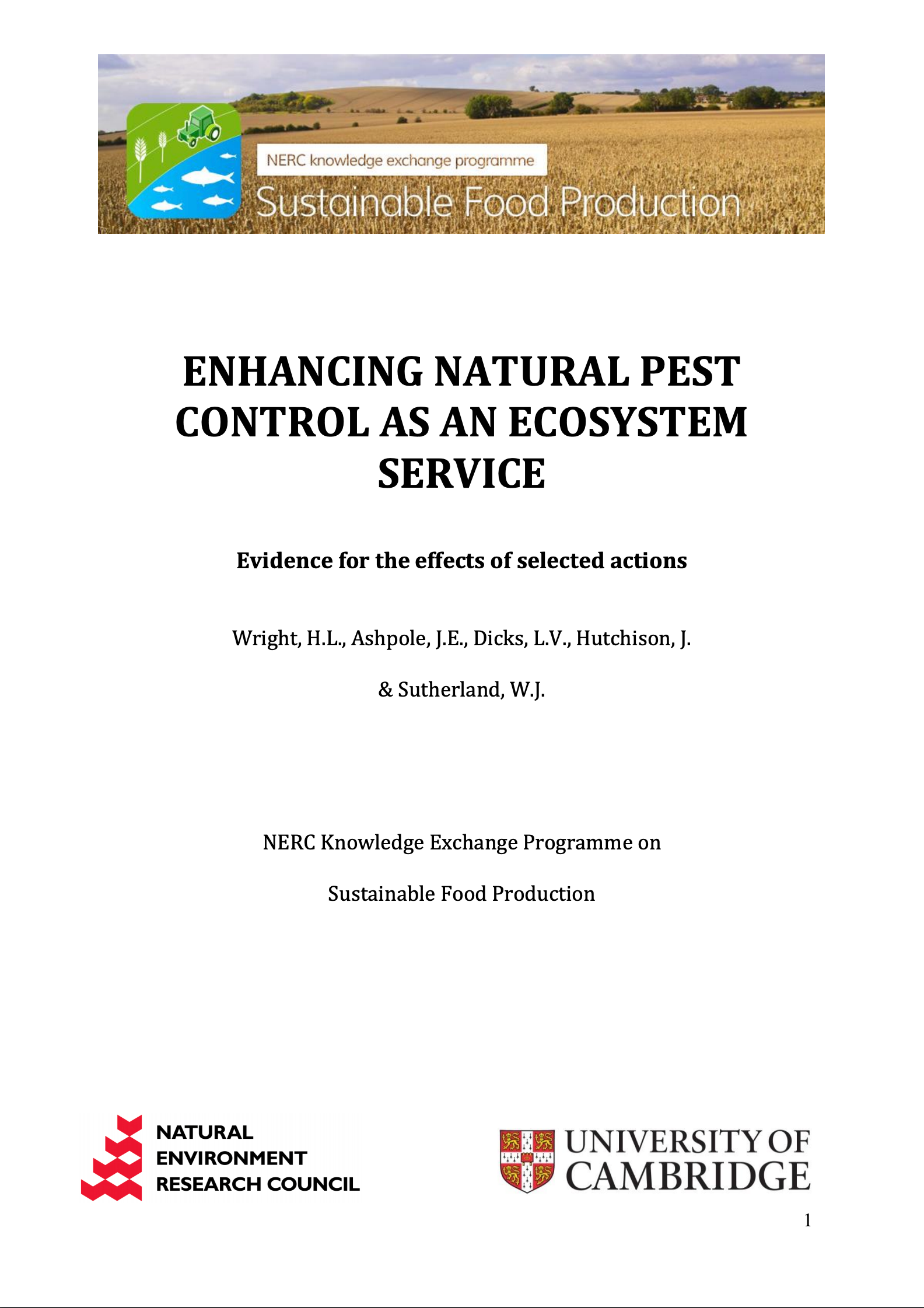Alter the timing of insecticide use
-
Overall effectiveness category Unknown effectiveness (limited evidence)
-
Number of studies: 5
View assessment score
Hide assessment score
How is the evidence assessed?
-
Effectiveness
40% -
Certainty
28% -
Harms
13%
Study locations
Supporting evidence from individual studies
A controlled study in 1978 in pear Pyrus sp. orchards in Kent, UK (Solomon et al. 1989) found plots sprayed with permethrin in March had 2.9 flower bug (Anthocoridae) adults/beat, plots sprayed in July had 0.5 adults and plots sprayed in both months had 0.4 adults, when these natural predators were measured in August. Spraying in March reduced flower bug numbers from 0.05-0.10 adults/beat before spraying to 0.0 adults one month afterwards, while spraying in July reduced numbers from 0.8 to 0.5 adults. In late August, plots sprayed only in March had 9 pest pear psyllid Cacopsylla pyricola eggs/10 leaves, plots sprayed only in July had 55 eggs and plots sprayed in both months had 45 eggs. A 2 ha orchard was divided into four treatments receiving permethrin sprays (100 g a.i./ha) in March, July, March and July or no sprays. Predators were sampled by beating branches over a 0.3 m² funnel.
Study and other actions testedA randomised, replicated study in 1984-1985 in North Yorkshire, UK (McGrath & Bale 1990) found that barley yellow dwarf virus Luteovirus spp. created more patches of stunted barley Hordeum vulgare in plots sprayed on 13 November (averaging 11-16 patches/plot) than on 23 October (6-16 patches) or 31 October (7-14 patches). The area of stunted patches (ranging 1,124-4,087 cm²) only differed between spraying dates in barley sown on 6 September rather than 18 or 27 September, and showed an increase with delayed spraying date. Effects of spray timing on English grain aphid Sitobion avenae (a carrier of the virus) depended on insecticide type. On all spraying dates, deltamethrin reduced aphids with no reinfestation later in the season. Demeton-S-methyl reduced aphids but limited reinfestation occurred (affecting < 3% of plants) in plots sprayed earliest (23 October). Pirimicarb also allowed reinfestation (affecting up to 6% of plants), particularly when applied early (23 October) or to plots sown on 6 September. The authors suggest that spraying early was effective for persistent insecticides, but spraying later (after aphid migration) was more effective for other insecticides. Yield (ranging 6.6-7.1 t/ha) was not consistently different between spraying dates. Three spraying dates were tested in plots of 2 x 24 m, replicated twelve times across three blocks testing sowing date effects.
Study and other actions testedA replicated study in 1987-1989 in Nebraska, USA (Peters & Lowry 1991) found similar root damage from western corn rootworm Diabrotica virgifera larvae in plots receiving insecticide before planting (average damage rating of 4.2) and plots receiving insecticide after planting (rating of 3.8). Maize Zea mays yields were also similar between plots treated before (10.5 t/ha) and after (10.9 t/ha) planting. Treatment prior to planting comprised chlorpyrifos granules applied at 34 g/1000 ft (304.8 m) of row. Treatment after planting was timed to correspond with corn rootworm egg hatch and early larval development and comprised chlorpyrifos emulsion at 1.12 kg/ha. Treatments were tested in 48.8 m² plots replicated four times. Root damage was scored from 1-6 with 1 being minor feeding damage and 6 equalling three or more root nodes destroyed/plant. Yields were assessed by hand harvesting two 20 ft (6.1 m) lengths of row in each plot.
Study and other actions testedA controlled study in November to March 1996-1997 and 1997-1998 in Nueva Ecija, Philippines (Aganon et al. 1997) reported a lower impact of insecticides on ladybird and other insect natural enemies (Coccinellidae and Hymenoptera) following the strategic use of insecticides (during times of critical crop susceptibility to pests) compared to conventional practice. Net profit and yield of eggplant Solanum melongena crops were US$481 and 3.3 t/ha (respectively) following strategic applications, compared with US$54 and 2.7 t/ha for conventional practices. Similar patterns were found for stringbean Phaseolus vulgaris profit and yield under strategically timed (US$718 and 6.9 t/ha) and conventional (US$576 and 6.7 t/ha) insecticide applications. The number of sprays was reduced from 13 for conventional practice to 10 for strategic application in aubergine, and from 13 to seven in stringbeans. The costs of production were US$875-1,072 for the strategic treatment and US$982-1,179 for the conventional practice. Insecticide applications in the strategic treatment were timed according to peaks in pest invertebrate population profiles monitored before the study in 1993-1996. No other details of experimental set-up or insecticide type were provided.
Study and other actions testedA randomised, replicated, controlled study in 1993-1994 in northern Mozambique (Davies 1998) found similar numbers of stem borers (Noctuidae) in plots of maize Zea mays treated with insecticide at 0-40, 40-80 and 80-120 days after planting, and between 120 days and harvest (1.1, 0.1, 0.5 and 1.0 borers/plant, respectively). Plots treated at 0-40 days after planting had more stem borers than controls treated throughout the growing season (0.03 borers/plant), but plots treated at other times had similar pest numbers to continuously treated controls. There was no difference in the percentage of stems infested (15-39%) or plants lost (42-48%) to stem borers for any of the treatments and controls. Yield was greater in plots treated after 40-80 days (4.8 t/ha) than in plots treated at other specific times (2.5-3.9 t/ha), but was similar to continuously treated controls (4.5 t/ha). Plots treated after 0-40 days (2.5 t/ha) and between 120 days and harvest (2.6 t/ha) had lower yields than continuously treated controls. Cyhalothrin insecticide was applied weekly in each time period. Each treatment was replicated four times in plots of four maize rows, 5 m long. Stem borer larvae and pupae were counted on 10 plants/plot at 120 days after planting.
Study and other actions tested
Where has this evidence come from?
List of journals searched by synopsis
All the journals searched for all synopses
This Action forms part of the Action Synopsis:
Natural Pest Control
Natural Pest Control - Published 2013
Natural Pest Control Synopsis





)_2023.JPG)














